|
Name and email
|
Phone
|
Fax
|
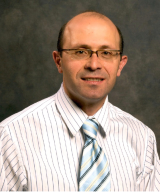 B. S. Abdulkarim; M.D., Ph.D., (Paris) F.R.C.P.(C) B. S. Abdulkarim; M.D., Ph.D., (Paris) F.R.C.P.(C)
Email: bassam.abdulkarim [at] mcgill.ca (Dr. Bassam Abdulkarim)
Profile
Dr. Bassam Abdulkarim is an Associate Professor in the Department of Oncology (Director, Division of Radiation Oncology, since April, 2011) and principle investigator at the Research Institute of the MUHC. Dr. Abdulkarim joined the Department of Pathology as an associate member in 2013.
Research Interests
Dr. Abdulkarim’s main research focus is on translational research in Lung cancer and Brain tumor. His is currently investigating the effect of different types of radiation fractionation including ablative dose of radiation in lung cancer and brain tumor.
Dr. Abdulkarim’s major interest is to develop prognostic and predictive biomarkers to radiation alone or in combination with new-targeted therapies. In addition, one of his research interests is focusing on the “comprehensive approach of lung cancer, radiation-induced fibrosis, and development of new therapeutics.
Recent Publications
YB-1 regulates Sox2 to coordinately sustain stemness and tumorigenic properties in a phenotypically distinct subset of breast cancer cells.
Jung K, Wu F, Wang P, Ye X, Abdulkarim BS, Lai R.
BMC Cancer. 2014 May 9;14:328.
Profiling gene promoter occupancy of Sox2 in two phenotypically distinct breast cancer cell subsets using chromatin immunoprecipitation and genome-wide promoter microarrays.
Jung K, Wang P, Gupta N, Gopal K, Wu F, Ye X, Alshareef A, Bigras G, McMullen TP, Abdulkarim BS, Lai R.
Breast Cancer Res. 2014 Nov 8;16(6):470.
A Phase I Study of Tomotherapy in Patients With Primary Benign and Low-grade Brain Tumors: Late Toxicity and Quality of Life.
Boychak A, Bauman G, Fisher B, Abdulkarim B, Amanie J, Fulton D, Murtha A, Patel S, Urtasun R, Ghosh S, Roa WH.
Am J Clin Oncol. 2014 Jan 22.
Spontaneous epithelial-mesenchymal transition and resistance to HER-2-targeted therapies in HER-2-positive luminal breast cancer.
Lesniak D, Sabri S, Xu Y, Graham K, Bhatnagar P, Suresh M, Abdulkarim B.
PLoS One. 2013 Aug 26;8(8):e71987.
Phase I study of hypofractionated intensity modulated radiation therapy with concurrent and adjuvant temozolomide in patients with glioblastoma multiforme.
Jastaniyah N, Murtha A, Pervez N, Le D, Roa W, Patel S, Mackenzie M, Fulton D, Field C, Ghosh S, Fallone G, Abdulkarim B.
Radiat Oncol. 2013 Feb 20;8:38.
O6-Methylguanine-DNA methyltransferase is a novel negative effector of invasion in glioblastoma multiforme.
Chahal M, Abdulkarim B, Xu Y, Guiot MC, Easaw JC, Stifani N, Sabri S.
Mol Cancer Ther. 2012 Nov;11(11):2440-50.
|
934-1934
ex. 43594 |
934-8392 |
C.J. Baglole; Ph.D. (University of Calgary)
Email: carolyn.baglole [at] mcgill.ca (Dr. Carolyn Baglole)
Profile
Dr. Baglole received her BSc and MSc from the University of Prince Edward Island, and her PhD from the University of Calgary. She then did postdoctoral research and subsequently joined the academic staff at the University of Rochester, before returning to Canada where she is currently an Assistant Professor in the Department of Medicine and an Associate Member in the Department of Pathology at McGill.
Research Interests: The research in her laboratory is aimed at identifying novel intracellular and molecular pathways that control the pathogenesis of chronic lung diseases associated with environmental exposures, particularly cigarette smoke. Her main focus is understanding how cigarette smoke-induced inflammation and cell death (apoptosis) are regulated. Chronic and persistent inflammation and the death of lung cells are involved in the etiology of lung diseases such as chronic obstructive pulmonary disease (COPD), which is almost always caused by cigarette smoke (>90% of cases). There is no cure for individuals afflicted with COPD and there are no effective therapies that can reduce disease progression. This is due, in part, to a lack of novel intracellular targets for the development of pharmacological therapies.
In this regard, her lab was the first to publish that the mere presence of a cellular receptor called the aryl hydrocarbon receptor (AhR) attenuates lung inflammation caused by cigarette smoke. This was a novel finding, as the normal physiological function of this receptor, which is best known for its ability to respond to synthetic toxicants, had not previously been described. Beyond its regulation of inflammation in the lung caused by cigarette smoke, they also investigate the role of the AhR in attenuating apoptosis, a feature that is characteristic of lung tissue destruction in COPD. Using genetic, molecular and biochemical approaches, together with in vitro and in vivo models of smoke exposure, her research is focused on establishing that the AhR is a novel and important regulator of apoptosis and understanding in vivo, and the role of the AhR in preventing morphological features of emphysema in the lung.
Recent Publications
The NF-κB Family Member RelB Attenuates Cigarette Smoke Extract-induced Apoptosis in Lung Fibroblasts via Transcriptional Regulation of the Aryl Hydrocarbon Receptor
Iu M, Zago M, Rico de Souza A, Bouttier M, White JH, Hamid Q, Eidelman DH and Baglole CJ.
Free Rad Biol Med. Accepted, 2017.
Inhaled Pollutants: The Molecular Scene behind Respiratory and Systemic Diseases Associated with Ultrafine Particulate Matter
Traboulsi H, Guerrina N, Iu M, Maysinger D, Ariya P, Baglole CJ
Int J Mol Sci. 2017 Jan 24;18(2). pii: E243. doi: 10.3390/ijms18020243. Review.
Aryl hydrocarbon receptor (AhR)-dependent regulation of pulmonary miRNA by chronic cigarette smoke exposure
Rogers S, de Souza AR, Zago M, Iu M, Guerrina N, Gomez A, Matthews J, Baglole CJ.
Sci Rep. 2017 Jan 12;7:40539. doi: 10.1038/srep40539
Monocyte-derived fibrocytes induce an inflammatory phenotype in airway smooth muscle cells.
Lin TY, Venkatesan N, Nishioka M, Kyoh S, Al-Alwan L, Baglole CJ, Eidelman DH, Ludwig MS, Hamid Q.
Clin Exp Allergy. 2014 Nov;44(11):1347-60
Alterations in the expression of the NF-κB family member RelB as a novel marker of cardiovascular outcomes during acute exacerbations of chronic obstructive pulmonary disease.
Labonté L, Coulombe P, Zago M, Bourbeau J, Baglole CJ.
PLoS One. 2014 Nov 19;9(11):e112965.
Aryl hydrocarbon receptor-dependent regulation of miR-196a expression controls lung fibroblast apoptosis but not proliferation.
Hecht E, Zago M, Sarill M, Rico de Souza A, Gomez A, Matthews J, Hamid Q, Eidelman DH, Baglole CJ.
Toxicol Appl Pharmacol. 2014 Nov 1;280(3):511-25
Aryl hydrocarbon receptor (AhR) attenuation of subchronic cigarette smoke-induced pulmonary neutrophilia is associated with retention of
nuclear RelB and suppression of intercellular adhesion molecule-1 (ICAM-1).
de Souza AR, Zago M, Eidelman DH, Hamid Q, Baglole CJ.
Toxicol Sci. 2014 Jul;140(1):204-23
The NF-κB family member RelB regulates microRNA miR-146a to suppress cigarette smoke-induced COX-2 protein expression in lung fibroblasts.
Zago M, Rico de Souza A, Hecht E, Rousseau S, Hamid Q, Eidelman DH, Baglole CJ.
Toxicol Lett. 2014 Apr 21;226(2):107-16
Genetic deletion of IL-17A reduces cigarette smoke-induced inflammation and alveolar type II cell apoptosis.
Chang Y, Al-Alwan L, Audusseau S, Chouiali F, Carlevaro-Fita J, Iwakura Y, Baglole CJ, Eidelman DH, Hamid Q.
Am J Physiol Lung Cell Mol Physiol. 2014 Jan;306(2):L132-43.
Aryl hydrocarbon receptor-dependent retention of nuclear HuR suppresses cigarette smoke-induced cyclooxygenase-2 expression independent of DNA-binding.
Zago M, Sheridan JA, Nair P, Rico de Souza A, Gallouzi IE, Rousseau S, Di Marco S, Hamid Q, Eidelman DH, Baglole CJ.
PLoS One. 2013 Sep 27;8(9):e74953.
Differential roles of CXCL2 and CXCL3 and their receptors in regulating normal and asthmatic airway smooth muscle cell migration.
Al-Alwan LA, Chang Y, Mogas A, Halayko AJ, Baglole CJ, Martin JG, Rousseau S, Eidelman DH, Hamid Q.
J Immunol. 2013 Sep 1;191(5):2731-41.
IL-8 production in response to cigarette smoke is decreased in epithelial cells from COPD patients.
Nadigel J, Audusseau S, Baglole CJ, Eidelman DH, Hamid Q.
Pulm Pharmacol Ther. 2013 Oct;26(5):596-602.
|
934-1934
ex. 76109 |
398-7483 |
N. Braverman; MD, M.Sc. (Tulane University; Sarah Lawrence College )
Email: nancy.braverman [at] mcgill.ca (Dr。 Nancy Braverman)
Profile
Dr. Braverman received her BSc from Cornell University and her Master in Human Genetics from Sarah Lawrence College。 She then received her M.D. from Tulane University, completed residency training in Pediatrics at Yale-New Haven hospital, followed by a Fellowship in Clinical and Biochemical Genetics at Johns Hopkins. She then joined McKusick-Nathan's Institute of Genetic Medicine as an Assistant Professor at Johns Hopkins University, and subsequently joined McGill where she is now an Associate Professor with tenure in the Department of Medicine and an Associate Member in the Department of Pathology at McGill.
Research Interests: The research in her laboratory is focused on a group of inherited disorders caused by defects in the genes responsible for the proper function of peroxisomes, important components of cells that help to metabolize lipids, or fatty acids. Peroxisomal disorders can involve either the assembly of the peroxisome itself (as in peroxisome biogenesis disorders), or specific enzymes located in the peroxisome. All of these conditions feature the loss of enzymes required by the body to metabolize important lipids. The consequences are a progressive disease of the nervous system, eye, hearing, bone, liver, kidney and adrenal glands. Her laboratory engineers mouse models of the disorders to investigate how these enzyme defects cause disease. To provide patients and their families with better prognostic information and care, the laboratory has established a patient registry documenting variations in disease outcome and is identifying drugs and therapies that can improve outcomes. The clinical trial of one drug is underway.
Recent Publications
Click on  to see Dr. Braveman's current publications list to see Dr. Braveman's current publications list
|
934-1934
ex. 23404 |
|
Sonia Cellot , M.D. , Ph.D. (Université de Montréal)
e-mail: sonia.cellot [at] umontreal.ca (Dr. Sonia Cellot )
Dr. Sonia Cellot is an Assistant Professor in the Department of Pediatrics at Université de Montréal and an investigator in the Viral and Immune Disorders and Cancers axis at CHU Sainte-Justine Research Center. She is a clinician-scientist with a BSc in Biochemistry from McGill, an MD from the Université de Montréal, Royal College certification in both Pediatrics and Hematology, and a PhD in Molecular Biology from the Université de Montréal. She has been a pediatric hematologist in the Hematology-Oncology Division of CHU Sainte-Justine since 2009, where she is responsible for the pediatric acute myeloid leukemia (AML) program and is the Assistant Director of the Immune disorders and Cancer research axis at CHU- Sainte-Justine . Clinical duties encompass direct patient care, mainly in the hematopoietic stem cell (HSC) transplantation unit, and diagnostic test development as medical advisor in the molecular biology laboratory. Since 2010, she has been the co-investigator of the pediatric branch of the Quebec Leukemia Cell Bank, in collaboration with Dr Josée Hébert, hematologist at Hôpital Maisonneuve-Rosemont, with the mandate to collect highly annotated pediatric AML and infant leukemia samples to support and promote research projects.
Her research focus is on hematopoietic stem cell (HSC) biology and the development of human synthetic leukemia models to identify therapeutic vulnerabilities in high fatality pediatric leukemia. Long-lived HSC sustain the constant production of all mature cell lineages in the blood system, and constitute the critical cellular component of transplantation procedures performed in oncology for high risk malignancies, including leukemia. Nonetheless, factors that dictate HSC fate remain poorly defined, and their isolation and ex vivo culture remain challenging, limiting their clinical applications. The main focus of the laboratory is to study the role of chromatin methylation in human HSC biology. Accessibility of the transcriptional machinery to the genetic code is mediated through the concerted actions of chromatin modifying enzymes. The Mll (Mixed Lineage Leukemia) gene, encoding for a histone methyltransferase (of lysine 4 on histone 3, or H3K4) is involved in normal HSC maintenance and mutated in >70% of infant leukemia cases. Once thought to be irreversible, histone methylation is now regarded as a highly dynamic process, since the identification of the histone demethylase LSD1 (KDM1A) in 2004. Previous work identified that JARID1B (KDM5B), an eraser of the H3K4 epigenetic mark, regulates the expression of stemness associated genes, and its knockdown leads to HSC expansion in culture. The implication of histone demethylases (HDM) in HSC biology and cancer development is being unraveled, and under active pharmacological investigation.
Recent Publications
Click on  to see Dr. Cellot's current publications list to see Dr. Cellot's current publications list
|
514-345-4870 |
514-345-4881 |
 P.J. Chauvin; M.Sc. (W.Ont.), D.D.S. (McG.) P.J. Chauvin; M.Sc. (W.Ont.), D.D.S. (McG.)
Email: peter.chauvin [at] muhc.mcgill.ca (Dr. Peter J. Chauvin)
|
934-1934
ex. 43844 |
934-8296 |
 M. Divangahi; Ph.D. (McG) M. Divangahi; Ph.D. (McG)
Email: maziar.divangahi [at] mcgill.ca (Dr. Maziar Divangahi)
Profile
Dr. Maziar Divangahi completed his PhD in the Department of Medicine at McGill University in 2005. He went to pursue three fellowships in Molecular Immunology and Infectious Diseases at McMaster University, McGill and Harvard University before being appointed at McGill as an Assistant Professor in the departments of Medicine and Microbiology & Immunology. He joined the Department of Pathology as an associate member in 2012.
Research Interests
Dr. Divangahi's research focuses on investigating the cellular and molecular mechanisms involved in cross-talk between innate and adaptive immunity to major pulmonary infectious diseases such as influenza and tuberculosis. He believes that understanding the different arms of immunity are essential for the future development of an effective therapy or vaccine.
Publications
Annexin1 regulates DC efferocytosis and cross-presentation during Mycobacterium tuberculosis infection.
Tzelepis F, Verway M, Daoud J, Gillard J, Hassani-Ardakani K, Dunn J, Downey J, Gentile ME, Jaworska J, Sanchez AM, Nédélec Y, Vali H, Tabrizian M, Kristof AS, King IL, Barreiro LB, Divangahi M.
J Clin Invest. 2014 Dec 22. pii: 77014.
Toll-like receptor 4 ablation in mdx mice reveals innate immunity as a therapeutic target in Duchenne muscular dystrophy.
Giordano C, Mojumdar K, Liang F, Lemaire C, Li T, Richardson J, Divangahi M, Qureshi S, Petrof BJ.
Hum Mol Genet. 2014 Dec 30. pii: ddu735.
Freund's adjuvant, NOD2 and mycobacteria.
Behr MA, Divangahi M.
Curr Opin Microbiol. 2014 Dec 5;23C:126-132.
Targeting eicosanoid pathways in the development of novel anti-influenza drugs.
Coulombe F, Divangahi M.
Expert Rev Anti Infect Ther. 2014 Nov;12(11):1337-43.
NLRX1 prevents mitochondrial induced apoptosis and enhances macrophage antiviral immunity by interacting with influenza virus PB1-F2 protein.
Jaworska J, Coulombe F, Downey J, Tzelepis F, Shalaby K, Tattoli I, Berube J, Rousseau S, Martin JG, Girardin SE, McCullers JA, Divangahi M.
Proc Natl Acad Sci U S A. 2014 May 20;111(20):E2110-9.
Targeted prostaglandin E2 inhibition enhances antiviral immunity through induction of type I interferon and apoptosis in macrophages.
Coulombe F, Jaworska J, Verway M, Tzelepis F, Massoud A, Gillard J, Wong G, Kobinger G, Xing Z, Couture C, Joubert P, Fritz JH, Powell WS, Divangahi M.
Immunity. 2014 Apr 17;40(4):554-68
N-glycolylated peptidoglycan contributes to the immunogenicity but not pathogenicity of Mycobacterium tuberculosis.
Hansen JM, Golchin SA, Veyrier FJ, Domenech P, Boneca IG, Azad AK, Rajaram MV, Schlesinger LS, Divangahi M, Reed MB, Behr MA.
J Infect Dis. 2014 Apr 1;209(7):1045-54.
|
934-1934
ex.76431 |
398-7483 |
Nada Jabado, MD, PhD
nada.jabado [at] mcgill.ca (E-mail: Dr. Nada Jabado)
Dr. Nada Jabado is a Professor of Pediatrics and staff physician in the Department of Hematology and Oncology at the Montreal Children’s Hospital. She completed her residency in pediatrics with a specialization in hemato-oncology, obtained a PhD in Immunology in Paris and followed that by a postdoctoral fellowship in biochemistry at McGill. She began her career as an independent investigator at The Research Institute of the McGill University Health Centre in 2003, pioneering a research program in pediatric brain tumours which is now unparalleled. Her group uncovered that pediatric high-grade astrocytomas (HGA) are molecularly and genetically distinct from adult tumours. More importantly, they identified a new molecular mechanism driving pediatric HGA, namely recurrent somatic driver mutations in the tail of histone 3 variants (H3.3 and H3.1) at amino acid positions K27 (Lysine to Methionine, K27M) and G34 (Glycine to Valine or Arginine, G34V/R). A true clinician-scientist, Dr. Jabado leads a lab comprised of 6 postdoctoral and clinical fellows, 6 graduate students and 5 research assistants/associates. Her ground-breaking work has created a paradigm shift in cancer with the identification of histone mutations in human disease for the first time. This finding has revolutionized the field, as the epigenome was a previously unsuspected hallmark of oncogenesis, thus linking development and what we now know are epigenetic-driven cancers. This work and other publications in the subject are considered landmark papers (over 3000 citations since 2012).
Dr. Jabado has over 150 peer-reviewed publications to her credit, with an impressive number of senior-author, high-impact publications in such prominent journals as Nature Genetics, Nature, Science and Cancer Cell, to name a few. She established the ICHANGE (International CHildhood Astrocytoma Novel Genomic and Epigenomic) Consortium which groups researchers from 17 countries. This is a unique set of resources which enables the scientific community to explore pediatric brain tumors in depth with the ultimate aim of offering better therapeutic options by providing datasets, international collaborations and access to technology to all members of participating countries.
Dr. Jabado is an international leader in the field of neuro-oncology and cancer, honored by invitations as Keynote and Guest Speaker at top ranked symposia and universities. She has received numerous national and international accolades while garnering prestigious awards throughout her career. She is one of the best-funded investigators at McGill, with grants from CIHR, FRSQ, Genome Canada, NIH, a Large Scale Genomic grant from Genome Canada as well as funding from philanthropic organizations. She was recently inducted as a Fellow to the Royal Society of Canada.
Dr. Jabado is part of a rare breed of physicians that can actively link research to the bedside, a true clinician scientist. Her dedication to scientific research in pediatric brain tumours and her passion for the patients in her care are inspiring and infectious to colleagues and trainees alike. Her coworkers describe her as The Tasmanian Devil, a moving force of nature that can uproot entire schools of thought with gale-force winds. Anyone who has witnessed her speak in public will also attest to this phenomenon. Legend has it that she lives on coffee and chocolates. Dr. Jabado considers downtime as time spent racing the ski slopes with her physician husband and three teenage children who are a family of avid skiers
As an independent Principal Investigator, Dr. Jabado's has embarked on elucidating genetic signatures of pediatric astrocytomas and examining how they compare to adults. These are deadly brain tumours that originate in brain and include glioblastomas (GBM, the highest grade of astrocytomas), which are one of the deadliest cancers in humans. Her group uncovered that pediatric high-grade astrocytomas (HGA) are molecularly and genetically distinct from adult tumors. They also identified a new molecular mechanism driving pediatric HGA, namely recurrent somatic driver mutations in the tail of histone 3 variants (H3.3 and H3.1). These mutations lead to amino acid substitutions at key residues and are tightly correlated with a distinct global DNA methylation pattern, neuroanatomical locations and age specificities. Their findings position them as leaders in the field of HGA, at the forefront of significant breakthroughs for this deadly brain tumor. Crucial impediments to progress are the lack of reliable in vitro and in vivo models for these “oncohistones” and understanding their effects in driving tumors and therapeutic resistance. they aim to identify events affected downstream of each mutation, and validate targets in their new models to better advise the use of experimental or pipeline drug(s) or drug combinations that could be rapidly translated into clinical trials. Ultimately, based on their findings, patients could be stratified based on their genetic/molecular signature, and assigned to a beneficial therapeutic strategy, bringing needed effective interventions in this devastating cancer. Additionally, they established a TCGA-like initiative by creating the International CHildhood Astrocytoma INtegrated Genomic and Epigenomic (ICHANGE) Consortium. This is a unique set of resources which enables the scientific world to investigate astrocytomas in children. It includes databases and access to technology as well as international collaborations from 15 participating countries, including ~1500 annotated glioma tissue samples representative of all grades and ages.
Diffuse intrinsic pontine gliomas -current management and new biologic insights. Is there a glimmer of hope?
Cohen KJ, Jabado N, Grill J
Neuro Oncol. 2017 Mar 24. doi: 10.1093/neuonc/nox021.
Atypical teratoid rhabdoid tumor in the first year of life: the Canadian ATRT registry experience and review of the literature.
Fossey M, Li H, Afzal S, Carret AS, Eisenstat DD, Fleming A, Hukin J, Hawkins C, Jabado N, Johnston D, Brown T, Larouche V, Scheinemann K, Strother D, Wilson B, Zelcer S, Huang A, Bouffet E, Lafay-Cousin L
J Neurooncol. 2017 Mar;132(1):155-162. doi: 10.1007/s11060-016-2353-0.
Impaired H3K36 methylation defines a subset of head and neck squamous cell carcinomas
Papillon-Cavanagh S, Lu C, Gayden T, Mikael LG, Bechet D, Karamboulas C, Ailles L, Karamchandani J, Marchione DM, Garcia BA, Weinreb I, Goldstein D, Lewis PW, Dancu OM, Dhaliwal S, Stecho W, Howlett CJ, Mymryk JS, Barrett JW, Nichols AC, Allis CD, Majewski J, Jabado N.
Nat Genet. 2017 Feb;49(2):180-185. doi: 10.1038/ng.3757
Integrated (epi)-Genomic Analyses Identify Subgroup-Specific Therapeutic Targets in CNS Rhabdoid Tumors.
Torchia J, ......, Jabado N, Huang A
Cancer Cell. 2016 Dec 12;30(6):891-908. doi: 10.1016/j.ccell.2016.11.003.
Longitudinal mutational analysis of a cerebellar pilocytic astrocytoma recurring as a ganglioglioma.
Fiset PO, Fontebasso AM, De Jay N, Gayden T, Nikbakht H, Majewski J, Jabado N, Albrecht S
Pediatr Blood Cancer. 2017 Feb;64(2):275-278. doi: 10.1002/pbc.26215
Histone H3K36 mutations promote sarcomagenesis through altered histone methylation landscape.
Lu C, Jain SU, Hoelper D, Bechet D, Molden RC, Ran L, Murphy D, Venneti S, Hameed M, Pawel BR, Wunder JS, Dickson BC, Lundgren SM, Jani KS, De Jay N, Papillon-Cavanagh S, Andrulis IL, Sawyer SL, Grynspan D, Turcotte RE, Nadaf J, Fahiminiyah S, Muir TW, Majewski J, Thompson CB, Chi P, Garcia BA, Allis CD, Jabado N, Lewis PW.
Science. 2016 May 13;352(6287):844-9. doi: 10.1126/science.aac7272.
|
|
|
Jun-Li Liu, PhD. (McGill University)
Email: un-li.liu [at] mcgill.ca (Dr. J-L Liu)
Recent Publications
Click on  to see Dr. JL-Liu's current publications list to see Dr. JL-Liu's current publications list
|
934-1934
ex. 35059 |
|
Shuk On Annie Leung 
Email: annie.leung [at] mcgill.ca (Dr. A Leung)
Dr. Annie Leung is a gynecologic oncologist at the McGill University Health Center in Montreal, Quebec, Canada. She is affiliated with the Departments of Obstetrics and Gynecology, Oncology, and Pathology. In her clinical practice, she treats patients with gynecologic malignancy throughout the cancer journey offering surgery, chemotherapy, targeted therapies, and palliative care. For cervical pre-cancer, she also provides care in colposcopy clinic for patients with abnormal paps and positive HPV results.
In her research, she is a Scientist at the Research Institute of the McGill University Health Center where she leads a translational laboratory investigating biomarkers relevant to cervical pre-cancer and cancer. Specifically, her expertise is in the detection of protein markers and circulating tumor DNA. Her research is funded by the Fonds de Rercherche du Quebec – Sante (Junior 1 Clinician Scientist) , American Association of Obstetricians and Gynecologist, MUHC Foundation, and Cedars Cancer Foundation.

|
|
|
 P. Metrakos; M.D. C.M. (McGill University) P. Metrakos; M.D. C.M. (McGill University)
Email: peter.metrakos [at] muhc.mcgill.ca (Dr. Peter Metrakos)
|
934-1934
ex. 31600 |
843 1503 |
 M. Park; Ph.D. (Glasgow University, Scotland) M. Park; Ph.D. (Glasgow University, Scotland)
Email: morag.park [at] mcgill.ca (Dr. Morag Park)
Profile
Dr. Morag Park is a James McGill Professor in the Departments of Biochemistry, Medicine and Oncology at McGill University, where she holds the Diane and Sal Guerrera Chair in Cancer Genetics. She is also the current Scientific Director of the CIHR Institute of Cancer Research. Dr. Park has published over 100 papers in peer-reviewed journals. Her work has been recognized with numerous awards including becoming a Fellow of the Royal Society of Canada.
Research Interests
Dr. Park has a long standing interest in the molecular mechanisms of cancer. More recently her interests include how changes in the tumor microenvironment modulate breast cancer progression. She founded the Breast Cancer Functional Genomics Group, which integrates breast cancer sample collection, laser capture microdissection microarray-based gene expression profiling and signature validation, and includes members from basic research, informatics as well as clinical surgery and pathology.
Recent Publications
Deficiency of the chromatin regulator Brpf1 causes abnormal brain development.
You L, Zou J, Zhao H, Bertos NR, Park M, Wang E, Yang XJ.
J Biol Chem. 2015 Jan 7. pii: jbc.M114.635250.
Breast Cancer Anti-Estrogen Resistance-3 inhibits transforming growth factor-ß/Smad signaling and associates with favorable breast cancer disease outcomes.
Guo J, Canaff L, Rajadurai C, Fils-Aimé N, Tian J, Dai M, Korah J, Villatoro M, Park M, Ali S, Lebrun JJ.
Breast Cancer Res. 2014 Dec 13;16(6):476.
MS/MS-based strategies for proteomic profiling of invasive cell structures.
Havrylov S, Park M.
Proteomics. 2015 Jan;15(2-3):272-86.
Autocrine Activation of the Wnt/β-Catenin Pathway by CUX1 and GLIS1 in Breast Cancers.
Vadnais C, Shooshtarizadeh P, Rajadurai CV, Lesurf R, Hulea L, Davoudi S, Cadieux C, Hallett M, Park M, Nepveu A.
Biol Open. 2014 Sep 12;3(10):937-46.
p66ShcA promotes breast cancer plasticity by inducing an epithelial-to-mesenchymal transition.
Hudson J, Ha JR, Sabourin V, Ahn R, La Selva R, Livingstone J, Podmore L, Knight J, Forrest L, Beauchemin N, Hallett M, Park M, Ursini-Siegel J.
Mol Cell Biol. 2014 Oct 1;34(19):3689-701.
Dynamic reprogramming of signaling upon met inhibition reveals a mechanism of drug resistance in gastric cancer.
Lai AZ, Cory S, Zhao H, Gigoux M, Monast A, Guiot MC, Huang S, Tofigh A, Thompson C, Naujokas M, Marcus VA, Bertos N, Sehat B, Perera RM, Bell ES, Page BD, Gunning PT, Ferri LE, Hallett M, Park M.
Sci Signal. 2014 Apr 22;7(322):ra38.
Ets2 in tumor fibroblasts promotes angiogenesis in breast cancer.
Wallace JA, Li F, Balakrishnan S, Cantemir-Stone CZ, Pecot T, Martin C, Kladney RD, Sharma SM, Trimboli AJ, Fernandez SA, Yu L, Rosol TJ, Stromberg PC, Lesurf R, Hallett M, Park M, Leone G, Ostrowski MC.
PLoS One. 2013 Aug 16;8(8):e71533.
|
398-5749 |
398-6769 |
| |
|
|
Sabah N.A. Hussain, M.D. Ph.D. Critical Care and Respiratory Divisions
 Email: sabah.hussain [at] muhc.mcgill.ca (Dr. sabah Hussain) Email: sabah.hussain [at] muhc.mcgill.ca (Dr. sabah Hussain)
Dr. Sabah Noori Abdul Hussain is a James McGill Professor in the Department of Medicine ,( Critical Care and Respiratory Divisions appointed since July 1st, 2005); Medical Director at Pulmonary Function Laboratories since july 1999 and the Research Director at Meakins-Christie Labs of the MUHC since july 1991. Dr. Hussain joined the Department of Pathology as an associate member in 2017.
Dr. Hussain is currently involved in three main areas of research. First, his laboratory is currently investigating molecular signaling pathways and mechanisms of action of angiogenesis factors in general and angiopoietins and Tie-2 receptors in particular. Current project include identification of transcription factor networks downstream from Tie-2 receptors both in endothelial cells and in cultured skeletal muscle satellite cells. In addition, his laboratory is exploring the biological functions of both angiopoietin-1 and angiopoietin-2 in regulating cytokine cascade and tissue injury in various models of inflammation including severe sepsis and acute lung injury. To achieve the objective in this area of research his laboratory has developed transgenic animal models to over-express angiopoietins selectively in the vasculature. His second area of research is the biological roles of angiopoietins in skeletal muscle regeneration with particular emphasis on ventilatory muscle function. In this regard, we are investigating the effectiveness of gene therapy in which angiopoietins are delivered in vivo in various models of skeletal muscle injury and regeneration including cardiotoxin necrosis model and mdx model of Duchenne Muscular Dystrophy. His third area of research interest is molecular mechanisms involved in skeletal muscle atrophy in general and regulation of autophagy and proteosomal pathways in particular. Current research project include assessing the contribution of autophagic pathway to skeletal muscle protein degradation in human diaphragm during mechanical ventilation.
Fibulin-5 Regulates Angiopoietin-1/Tie-2 Receptor Signaling in Endothelial Cells
Chan Wilson, Ismail Hodan, Mayaki Dominique, Sanchez Veronica, Tiedemann Kerstin, Davis Elaine C, Hussain Sabah N A,
PloS one, Volume 11, Issue 6, e0156994 (June 15, 2016)
Prolonged controlled mechanical ventilation in humans triggers myofibrillar contractile dysfunction and myofilament protein loss in the diaphragm
Hussain Sabah N A, Cornachione Anabelle S, Guichon Céline, Al Khunaizi Auday, Leite Felipe de Souza, Petrof Basil J, Mofarrahi Mahroo, Moroz Nikolay, de Varennes Benoit, Goldberg Peter, Rassier Dilson E,
Thorax, Volume 71, Issue 5, 436-45 (March 31, 2016)
Contribution of the Mitochondria to Locomotor Muscle Dysfunction in Patients With COPD
Taivassalo Tanja, Hussain Sabah N A,
Chest, Volume 149, Issue 5, 1302-12 (December 12, 2015)
Angiopoietin-1 inhibits toll-like receptor 4 signalling in cultured endothelial cells: role of miR-146b-5p
Echavarria Raquel, Mayaki Dominique, Neel Jean-Charles, Harel Sharon, Sanchez Veronica, Hussain Sabah N A, ,
Cardiovascular research, Volume 106, Issue 3, 465-77 (March 30, 2015)
Angiopoietin-1 enhances skeletal muscle regeneration in mice
Mofarrahi Mahroo, McClung Joseph M, Kontos Christopher D, Davis Elaine C, Tappuni Bassman, Moroz Nicolay, Pickett Amy E, Huck Laurent, Harel Sharon, Danialou Gawiyou, Hussain Sabah N A,
American journal of physiology. Regulatory, integrative and comparative physiology, Volume 308, Issue 7, R576-89 (January 21, 2015)
Reactive oxygen species regulation of autophagy in skeletal muscles
Rahman Mashrur, Mofarrahi Mahroo, Kristof Arnold S, Nkengfac Bernard, Harel Sharon, Hussain Sabah N A,
Antioxidants & redox signaling, Volume 20, Issue 3, 443-59 (2014)
Regulation of angiopoietin-1/Tie-2 receptor signaling in endothelial cells by dual-specificity phosphatases 1, 4, and 5,
Echavarria Raquel, Hussain Sabah N A,
Journal of the American Heart Association, Volume 2, Issue 6, e000571 (December 5, 2013)
Autophagic flux and oxidative capacity of skeletal muscles during acute starvation
Mofarrahi Mahroo, Guo Yeting, Haspel Jeffrey A, Choi Augustine M K, Davis Elaine C, Gouspillou Gilles, Hepple Russell T, Godin Richard, Burelle Yan, Hussain Sabah N A,
Autophagy, Volume 9, Issue 10, 1604-20 (August 15, 2013)
Angiogenesis-related factors in skeletal muscles of COPD patients: roles of angiopoietin-2
Mofarrahi Mahroo, Sigala Ioanna, Vassilokopoulos Theodoros, Harel Sharon, Guo Yeting, Debigare Richard, Maltais Francois, Hussain Sabah N A,
Journal of applied physiology (Bethesda, Md. : 1985), Volume 114, Issue 9, 1309-18 (January 10, 2013)
Muscle cell derived angiopoietin-1 contributes to both myogenesis and angiogenesis in the ischemic environment.
McClung Joseph M, Reinardy Jessica L, Mueller Sarah B, McCord Timothy J, Kontos Christopher D, Brown David A, Hussain Sabah N A, Schmidt Cameron A, Ryan Terence E, Green Tom D,
Frontiers in physiology, Volume 6, 161 (May 19, 2015)
Mechanisms of Chronic Muscle Wasting and Dysfunction after an Intensive Care Unit Stay. A Pilot Study
Dos Santos Claudia, Hussain Sabah N A, Mathur Sunita, Picard Martin, Herridge Margaret, Correa Judy, Bain Alexandra, Guo Yeting, Advani Andrew, Advani Suzanne L, Tomlinson George, Katzberg Hans, Streutker Catherine J, Cameron Jill I, Schols Annemie, Gosker H R, Batt J,
American journal of respiratory and critical care medicine, Volume 194, Issue 7, 821-830 (October 1, 2016.
Failed reinnervation in aging skeletal muscle
Aare Sudhakar, Spendiff Sally, Vuda Madhusudanarao, Elkrief Daren, Perez Anna, Wu Qinghua, Mayaki Dominique, Hussain Sabah N A, Hettwer Stefan, Hepple Russell T,
Skeletal muscle, Volume 6, Issue 1, 29 (September 1, 2016)
|
9341934 Ext.
34645 (office)
36016 (lab)
76172(admin)
|
Fax:933-3962
|
Wassim Kassouf, MD, CM, FRCSC
email: wassim.kassouf [at] muhc.mcgill.ca (Dr. Wassim Kassouf)
After medical school and residency at McGill University, Dr Wassim Kassouf completed a urologic oncology fellowship at M. D. Anderson Cancer Center in Houston, Texas. He then arrived on faculty in August 2006 at the McGill University Health Center, Montreal, Canada. He is a Professor in the Division of Urology and Vice-Chair, academic affairs, of the Department of Surgery at McGill University. Dr. Kassouf’s clinical practice focuses on bladder, prostate, and renal cancer.
He has led several national guidelines for optimizing quality of care in urologic cancer management and has published over 270 peer-review manuscripts and book chapters. He is the founder of the national Canadian Bladder Cancer Network, a co-founder of Bladder Cancer Canada (BCC), co-chair of the National Cancer Institute of Canada’s disease-oriented group in bladder cancer, and an executive member of the NIH Genitourinary steering committee Bladder Cancer Task Force. He has served as program director over the last 6 years and currently is a member of the Royal College Urology Examination board committee. Dr Kassouf is a graduate of the AUA Leadership Program and received several awards including the American Urological Association Young Urologist of the Year, AUA Research Scholar Award, Canadian Urological Association Scholarship Award, FRSQ Clinician Scientist Research Scholar Award, and the Everett C. Reid Teaching Excellence Award.
His clinical and translational research focuses on the biology and therapy of bladder cancer. His translational research over the recent years have been primarily on biomarkers and radiosensitization in bladder cancer.
Phase I clinical trial of everolimus combined with trimodality therapy in patients with invasive bladder cancer
Bachir B, Souhami L, Mansure JJ, Brimo F, Vanhuyse M, Sturgeon J, Cury F, Aprikian A, Tanguay S, and Kassouf W
(Bladder Cancer, in press)
Radical Cystectomy is the best choice for most patients with muscle-invasive bladder cancer?
Monteiro LL, Kassouf W
Int Braz J Urol. 2017 Mar-Apr;43(2):184-187.
Quality indicators in the management of bladder cancer: A modified Delphi study.
Khare SR, Aprikian A, Black P, Blais N, Booth C, Brimo F, Chin J, Chung P, Drachenberg D, Eapen L, Fairey A, Fleshner N, Fradet Y, Gotto G, Izawa J, Jewett M, Kulkarni G, Lacombe L, Moore R, Morash C, North S, Rendon R, Saad F, Shayegan B, Siemens R, So A, Sridhar SS, Traboulsi SL, Kassouf W.
Urol Oncol. 2017 Jan 3. pii: S1078-1439(16)30410-0. doi: 10.1016/j.urolonc.2016.12.003
Systematic Review on the Fate of the Remnant Urothelium after Radical Cystectomy
Gakis G, Black PC, Bochner BH, Boorjian SA, Stenzl A, Thalmann GN, Kassouf W.
Eur Urol. 2017 Apr;71(4):545-557. doi: 10.1016/j.eururo.2016.09.035. Review.
The role of HMGB1 in radio-resistance of bladder cancer
Shrivastava S, Mansure JJ, Almajed W, Cury F, Ferbeyre G, Popovic M, Seuntjens J, Kassouf W
Mol Cancer Ther 15:471-9, 2016.
A novel mechanism of PPAR gamma induction via EGFR signalling constitutes rational for combination therapy in bladder cancer.
Mansure JJ, Nassim R, Chevalier S, Szymanski K, Rocha J, Aldousari S, Kassouf W
PLoS One. 8(2):e55997, 2013
Combining mTOR inhibition with radiation improves antitumor activity in bladder cancer cells in vitro and in vivo: a novel strategy for treatment
Nassim R, Mansure JJ, Chevalier S, Cury F, Kassouf W
PLoS One. 2013 Jun 17;8(6):e65257.
Relevance of the mammalian target of rapamycin pathway in the prognosis of patients with high-risk non-muscle invasive bladder cancer.
Fahmy M, Mansure JJ, Brimo F, Yafi FA, Segal R, Althunayan A, Hicks J, Meeker A, Netto G, Kassouf W
Hum Pathol. 2013 Apr 23. doi:pii: S0046-8177(13)00078-6
Prognostic value of urinary cytology and other biomarkers for recurrence and progression in bladder cancer: a prospective study.
Bell MD, Yafi FA, Brimo F, Steinberg J, Aprikian AG, Tanguay S, Kassouf W.
World J Urol. 2016 Oct;34(10):1405-9. doi: 10.1007/s00345-016-1795-5.
Does teaching of robotic partial nephrectomy affect renal function and perioperative outcomes?
Cerantola Y, Ploussard G, Kassouf W, Anidjar M, Bladou F.
Urol Oncol. 2017 Jan 6. pii: S1078-1439(16)30408-2. doi: 10.1016/j.urolonc.2016.12.001
Perioperative chemotherapy in upper tract urothelial carcinoma: a comprehensive review.
Aziz A, Dobruch J, Hendricksen K, Kluth LA, Necchi A, Noon A, Rink M, Roghmann F, Seiler R, Gontero P, Kassouf W, Shariat SF, Xylinas E; Young Academic Urologists Urothelial Carcinoma Group of the European Association of Urology.
World J Urol. 2017 Jan 10. doi: 10.1007/s00345-016-1995-z. [Epub ahead of print] Review.
Incidence, Characteristics and Implications of Thromboembolic Events in Patients with Muscle Invasive Urothelial Carcinoma of the Bladder Undergoing Neoadjuvant Chemotherapy.
Duivenvoorden WC, Daneshmand S, Canter D, Lotan Y, Black PC, Abdi H, van Rhijn BW, Fransen van de Putte EE, Zareba P, Koskinen I, Kassouf W, Traboulsi SL, Kukreja JE, Boström PJ, Shayegan B, Pinthus JH.
J Urol. 2016 Dec;196(6):1627-1633. doi: 10.1016/j.juro.2016.06.017.
Postoperative Nomogram for Relapse-Free Survival in Patients with High Grade Upper Tract Urothelial Carcinoma.
Krabbe LM, Eminaga O, Shariat SF, Hutchinson RC, Lotan Y, Sagalowsky AI, Raman JD, Wood CG, Weizer AZ, Roscigno M, Montorsi F, Bolenz C, Novara G, Kikuchi E, Fajkovic H, Rapoport LM, Glybochko PV, Zigeuner R, Remzi M, Bensalah K, Kassouf W, Margulis V.
J Urol. 2017 Mar;197(3 Pt 1):580-589. doi: 10.1016/j.juro.2016.09.078.
Upper Urinary Tract Carcinoma In Situ: Current Knowledge, Future Direction.
Redrow GP, Guo CC, Brausi MA, Coleman JA, Fernandez MI, Kassouf W, Keeley FX Jr, Margulis V, Raman JD, Roupret M, Shariat SF, Spiess PE, Thalmann GN, Matin SF.
J Urol. 2017 Feb;197(2):287-295. doi: 10.1016/j.juro.2016.03.194. Review.
Epidemiology, diagnosis, preoperative evaluation and prognostic assessment of upper-tract urothelial carcinoma (UTUC).
Soria F, Shariat SF, Lerner SP, Fritsche HM, Rink M, Kassouf W, Spiess PE, Lotan Y, Ye D, Fernández MI, Kikuchi E, Chade DC, Babjuk M, Grollman AP, Thalmann GN.
World J Urol. 2017 Mar;35(3):379-387. doi: 10.1007/s00345-016-1928-x.
Impact of Implementing the Paris System for Reporting Urine Cytology in the Performance of Urine Cytology: A Correlative Study of 124 Cases.
Hassan M, Solanki S, Kassouf W, Kanber Y, Caglar D, Auger M, Brimo F.
Am J Clin Pathol. 2016 Sep;146(3):384-90. doi: 10.1093/ajcp/aqw127.
Collaborating to Move Research Forward: Proceedings of the 10th Annual Bladder Cancer Think Tank.
Kamat AM, Agarwal P, Bivalacqua T, Chisolm S, Daneshmand S, Doroshow JH, Efstathiou JA, Galsky M, Iyer G, Kassouf W, Shah J, Taylor J, Williams SB, Quale DZ, Rosenberg JE.
Bladder Cancer. 2016 Apr 27;2(2):203-213.
Neoadjuvant chemotherapy-related histologic changes in radical cystectomy: assessment accuracy and prediction of response.
Wang HJ, Solanki S, Traboulsi S, Kassouf W, Brimo F.
Hum Pathol. 2016 Jul;53:35-40. doi: 10.1016/j.humpath.2016.02.011.
Enumerating pelvic recurrence following radical cystectomy for bladder cancer: A Canadian multi-institutional study.
Eapen LJ, Jones E, Kassouf W, Lambert C, Morgan SC, Moussa M, Nam R, Parliament M, Russell L, Saad F, Siemens DR, Souhami L, Szumacher E, Tyldesley S, Xu Y, Zbieranowski I, Breau RH, Belanger E, Black P, Estey E, Bowan J, Bora B, Brundage M, Chung P, Fleshner N, Evans A, Bauman G, Izawa J, Davidson C, Brimo F.
Can Urol Assoc J. 2016 Mar-Apr;10(3-4):90-4. doi: 10.5489/cuaj.3456.
|
934-8246
|
934-8297
|
Goffredo Orazio Rinaldo Arena, MD, Chir. Vasc. (Ita), FRCS(C),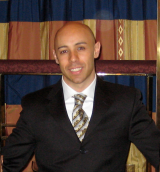
Email: goffredoarena [at] gmail.com (Dr. Goffredo Orazio Rinaldo Arena, MD)
Dr. Goffredo Arena graduated in Italy at the University of Catania in 1997. He then moved to England where he started his training in General and Vascular Surgery at the Royal Free Hospital in London. In 2003 he transferred to McMaster University in Hamilton to continue his training in General and Vascular Surgery. In 2006 he gained the Vascular Surgery fellowship Certificate in Italy and in 2007 he obtained his General Surgery Specialist Certificate in Canada and he became a fellow of the Royal College of Surgeons. In 2007 he relocated to Montreal and he completed back to back a fellowship in Minimally Invasive Surgery and a fellowship in HPB and multi-organ transplantation at McGill University.
His main research interest focus on horizontal transfer of malignant traits and he has become worldwide one of the main advocates of the genometastatic hypothesis. He has patented a novel blood test called MATERD for cancer screening and metastatic recurrence prediction. Recently he published on the reprogramming effect of human embryonic stem cells’ exosomes on cancer cells.
Transfer of malignant traits as opposed to migration of cells: A novel concept to explain metastatic disease.
Arena GO, Arena V, Arena M, Abdouh M.
Med Hypotheses. 2017 Mar;100:82-86. doi: 10.1016/j.mehy.2017.01.019
Reprogramming Malignant Cancer Cells toward a Benign Phenotype following Exposure to Human Embryonic Stem Cell Microenvironment.
Zhou S, Abdouh M, Arena V, Arena M, Arena GO.
PLoS One. 2017 Jan 9;12(1):e0169899. doi: 10.1371/journal.pone.0169899.
Transfer of malignant trait to BRCA1 deficient human fibroblasts following exposure to serum of cancer patients.
Hamam D, Abdouh M, Gao ZH, Arena V, Arena M, Arena GO.
J Exp Clin Cancer Res. 2016 May 14;35:80. doi: 10.1186/s13046-016-0360-9
Kommerell's diverticulum and aneurismal right sided aortic arch: a case report and review of the literature.
Cinà CS, Arena OG, Clase CM, Bruin G.
Journal of Vascular Surgery 2000; 32: 1208-14
Ruptured mycotic thoracoabdominal aortic aneurysms: Three case reports and a systematic review.
Cinà CS, Arena OG, Fiture AO, Clase CM, Doobay B.
Journal of Vascular Surgery 2001; 33:861-7
Subclavian-carotido transposition to reconstruct the first portion of the subclavian artery: personal experience and review of the literature.
Cinà CS, Safar HA, Laganà A, Arena OG, Clase CM.
Journal of Vascular Surgery 2002; 35: 422-29
Cerebrospinal fluid drainage to prevent paraplegia during thoracic and thoracoabdominal aortic aneurysm surgery: A systematic review and a meta-analysis.
Hamam D, Abdouh M, Gao ZH, Arena V, Arena M, Arena GO.
Cina CS, Arena GO, et al.
Journal of Vascular Surgery 2004; 40: 36-44
The retrojugular approach to carotid endarterectomy- A safer technique?
Menon NJ, Krijgsmann B, Sciacca L, Arena GO, Hamilton G.
Journal of Vascular and Endovascular Surgery 2005; 29 (6):608-10
Laparoscopic versus open resection for colorectal cancer: a meta-analysis of oncologic outcomes.
Jackson TD, Kaplan GG, Arena G, Page JH, Rogers SO Jr
J Am Coll Surg 204:439–446 (2007)
Laparoscopic vs. open resection for colorectal cancer: A meta-analysis of oncologic outcomes
Jackson T.D., Kaplan G.G., Arena G., Page J.H., Rogers S.O.
Journal of Surgical Research February 2007 (Vol. 137, Issue 2, Page 248)
Staged hepatectomy for bilobar colorectal hepatic metastases
Jamal MH, Hassanain M, Chaudhury P, Tran TT, Wong S, Yousef Y, Jozaghi Y, Salman A, Jabbour S, Simoneau E, Al-Abbad S, Al-Jiffry M, Arena G, Kavan P, Metrakos P.
HPB (Oxford). 2012 Nov;14(11):782-9. doi: 10.1111/j.1477-2574.2012.00543.x. Epub 2012 Aug 26.
|
483 5101 |
482-4342
|
|
Dr. Joanna Przybyl Ph.D (KU Leuven)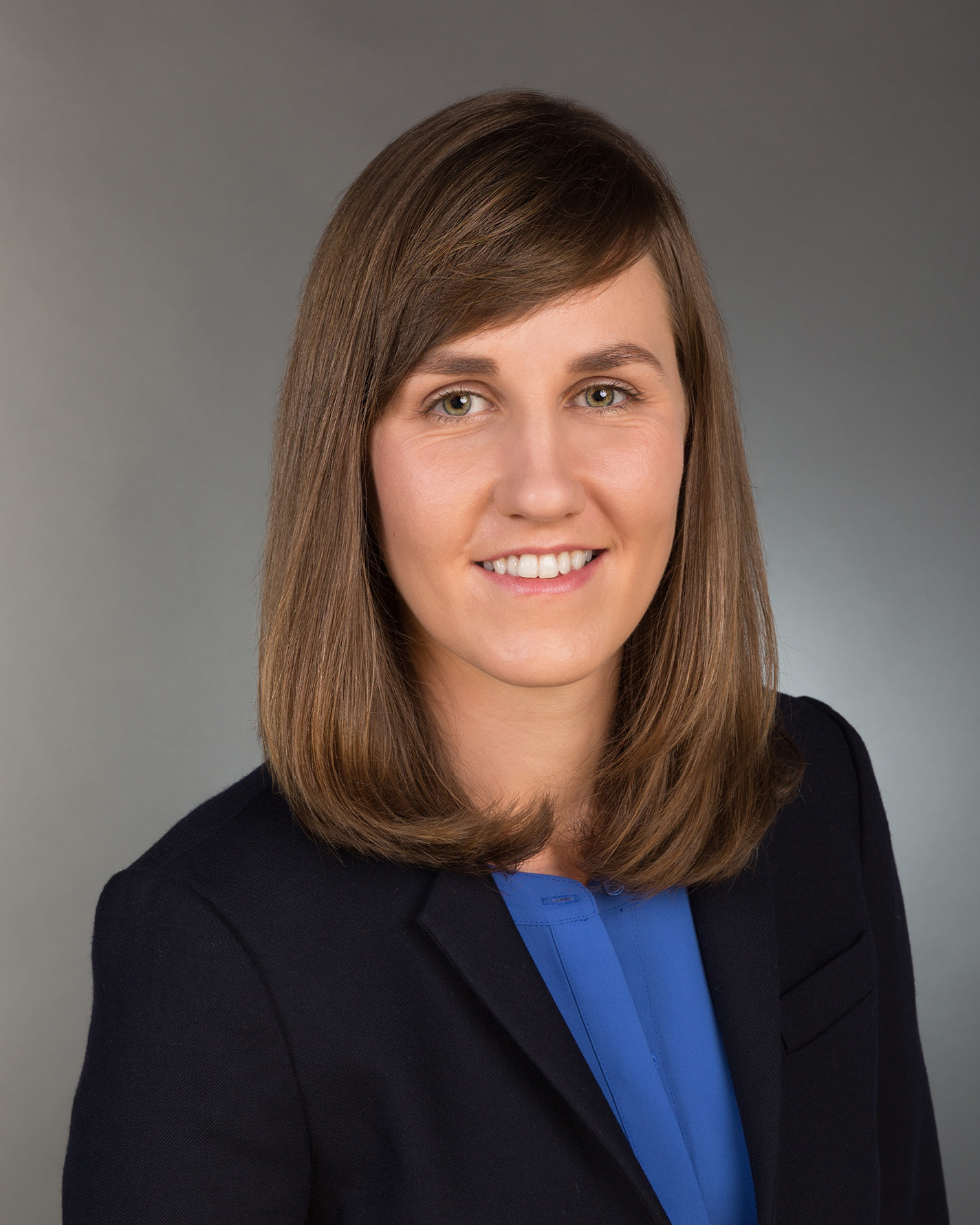
Email: joanna.przybyl [at] mcgill.ca (Dr. Joanna Przybyl )
Dr. Joanna Przybyl received a joint Ph.D. degree in biomedical sciences from KU Leuven, Belgium and Maria Sklodowska-Curie Memorial Cancer Center and Institute of Oncology, Warsaw, Poland. Her doctoral studies focused on identifying new prognostic and predictive markers for soft tissue sarcoma. She then joined the laboratory of Dr. Matt van de Rijn in the Department of Pathology at Stanford University, where she completed her postdoctoral training in computational biology. During her postdoctoral studies, Dr. Przybyl demonstrated potential clinical utility of ctDNA monitoring in patients with leiomyosarcoma and leiomyoma, discovered activation and prognostic role of hexosamine biosynthesis pathway in leiomyosarcoma, and identified macrophage infiltration in undifferentiated uterine sarcomas. In 2021, Dr. Przybyl joined the Department of Surgery of the McGill University as an Assistant Professor, and the Cancer Research Program of the Research Institute of the McGill University Health Centre (RI-MUHC) as a Junior Scientist. Dr. Przybyl is also an Associate Member in the Department of Pathology of the McGill University.
The research projects in the laboratory of Dr. Przybyl are focused on: 1) development of liquid biopsy (circulating tumor DNA) assays for patients with soft tissue tumors, 2) metabolic reprogramming in selected types of soft tissue tumors, and 3) multi-omic profiling of soft tissue tumors to identify new diagnostic markers and therapeutic targets in these tumors.Content B
|
|
|






 I. Hüttner; M.D. (Budapest), Ph.D. (McGill) F.R.C.P. (C)
I. Hüttner; M.D. (Budapest), Ph.D. (McGill) F.R.C.P. (C)
 J. Arseneau; M.D. (Laval), F.R.C.P.(C)
J. Arseneau; M.D. (Laval), F.R.C.P.(C)
 F. Brimo; M.D. (Syria), F.R.C.P.(C)
F. Brimo; M.D. (Syria), F.R.C.P.(C) S. Camilleri-Broët; M.D. Ph.D. (Paris)
S. Camilleri-Broët; M.D. Ph.D. (Paris) B. Case; B.Sc., M.D.,C.M., M.Sc. (McG.) Dipl. Occ. Hyg., F.R.C.P.(C)
B. Case; B.Sc., M.D.,C.M., M.Sc. (McG.) Dipl. Occ. Hyg., F.R.C.P.(C)



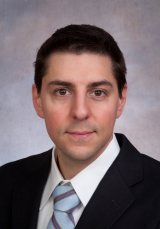 J. Karamchandani; M.D. (Stanford)
J. Karamchandani; M.D. (Stanford)
 M. Pelmus; M.D.
M. Pelmus; M.D.
 L. Rochon; M.D. (Sher.), F.R.C.P.(C)
L. Rochon; M.D. (Sher.), F.R.C.P.(C) E.A. Zorychta; Ph.D. (McG.)
E.A. Zorychta; Ph.D. (McG.) O. E. Ajise, M.D., F.C.A.P., F.R.C.P.(C)
O. E. Ajise, M.D., F.C.A.P., F.R.C.P.(C) M. Alameldin; M.D., F.R.C.P.(C)
M. Alameldin; M.D., F.R.C.P.(C)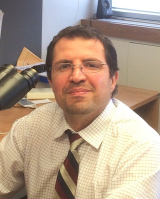 K. Bakdounes; M.D. (Syria)
K. Bakdounes; M.D. (Syria)

 Email:
Email: 
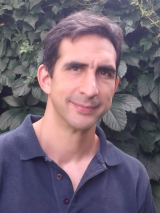
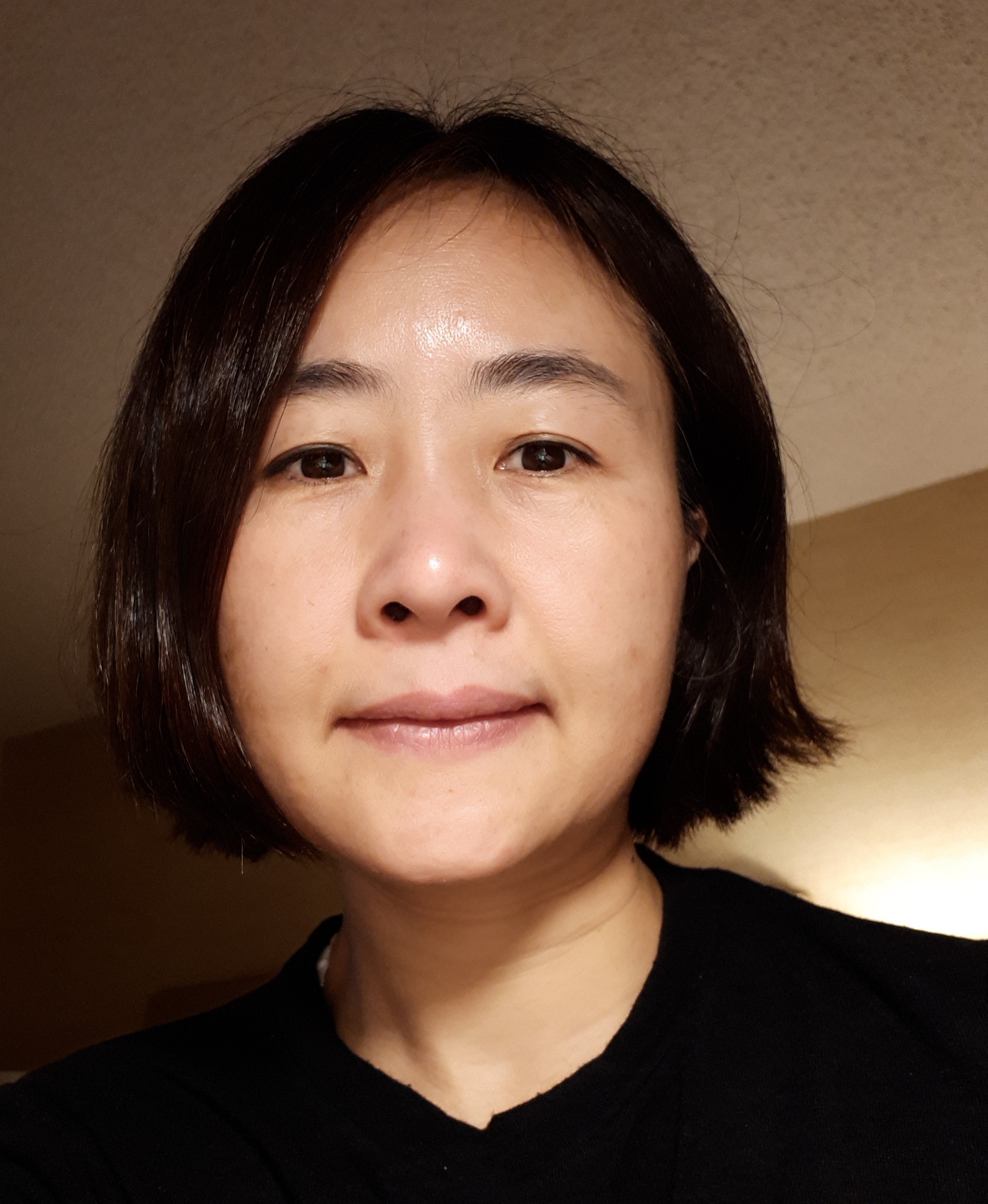

 J. Lavoie; M.D., Ph.D. (Laval)
J. Lavoie; M.D., Ph.D. (Laval)


 Email:
Email:  H. Wang; M.D. (China)
H. Wang; M.D. (China)


 B. S. Abdulkarim; M.D., Ph.D., (Paris) F.R.C.P.(C)
B. S. Abdulkarim; M.D., Ph.D., (Paris) F.R.C.P.(C)


 P.J. Chauvin; M.Sc. (W.Ont.), D.D.S. (McG.)
P.J. Chauvin; M.Sc. (W.Ont.), D.D.S. (McG.) M. Divangahi; Ph.D. (McG)
M. Divangahi; Ph.D. (McG)


 P. Metrakos; M.D. C.M. (McGill University)
P. Metrakos; M.D. C.M. (McGill University) M. Park; Ph.D. (Glasgow University, Scotland)
M. Park; Ph.D. (Glasgow University, Scotland) Email:
Email: 

